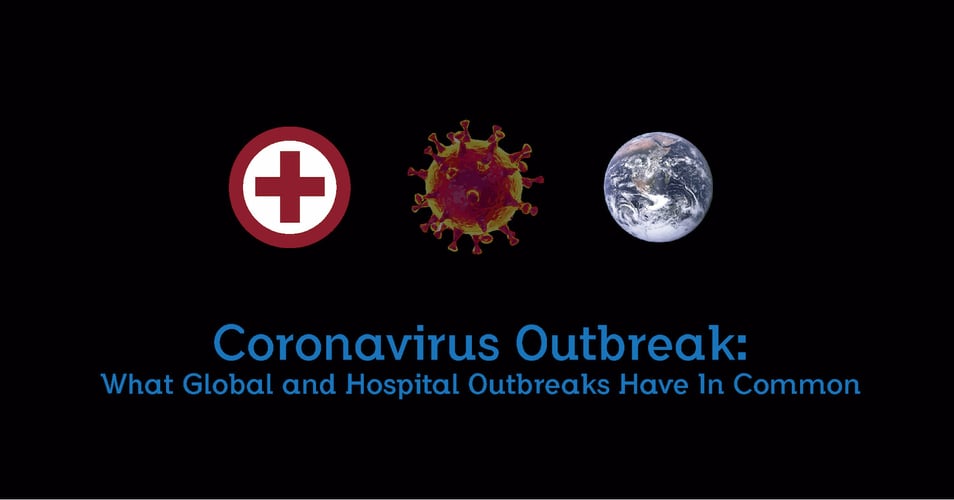It's FIRE! Well, FHIR. The Fast Healthcare Interoperability Resource. It's FHIR.

Managing and sharing vast amounts of patient data across various platforms and systems remains one of healthcare's most challenging tasks. One of the most transformative developments in addressing these hurdles is the Fast Healthcare Interoperability Resources (FHIR) standard, a digital data organizational structure that helps hardware and software (including apps) better communicate with each other. In today's post, we'll look at who is behind these global digital standards and how they set the foundation for quality data management, and ultimately, safer patients.
Let's start at the very beginning...
For computers to communicate with each other, they have to be speaking the same language - or at least have a reliable translation. Data, whether it's stock market prices or spacecraft trajectories, is still all 0s and 1s, and software gives humans an interface to manipulate that data. For healthcare information, this means data such as patient demographics (name, age, gender, etc.), diagnosis codes (ICD-10), physician interactions, lab reports, insurance information, billing records, and so much more. This data comes together to form a patient's electronic health record (EHR). For electronic health records to be truly useful, the data they contain should be universally understood, regardless of the software that accesses it. This is where Health Level 7 comes in.
Health Level 7 International (HL7)
Why "Health Level 7"?Open System Interconnection (OSI) has seven levels for data transfer between networks. The first six describe the many elements that exist behind the scenes. The final, 7th, level, is Application, the layer where transmission activity for software takes place. By using this in its name, HL7 captures the goal of a user-friendly interface from which to access reliable healthcare data. |
Or rather, where it came in - building on precursors that originated alongside the origins of computers. When computers were just beginning to be used in healthcare to store information, there were no standards for sending, storing and receiving data. In the late 1970s, the University of California at San Francisco Medical Center developed data standards that were then adopted by other health systems in the early 1980s. These first working groups of analysts, programmers, and medical administrators grew to form the non-profit Health Level 7, which was officially founded in 1987. Today, HL7’s mission is to facilitate interoperability in healthcare, ensuring that data can flow seamlessly between disparate systems to improve patient care and outcomes.
What are Fast Healthcare Interoperability Resources (FHIR)?
Fast Healthcare Interoperability Resources (FHIR, pronounced "fire") is a web-based standard for exchanging healthcare information electronically. HL7 has produced several standards, including messaging standards and the Clinical Document Architecture (CDA) and Continuity of Care Document (CCD) used by all electronic health records software. However, its work on FHIR represents a significant leap forward in healthcare interoperability. With an emphasis on real-time data exchange, FHIR provides a more flexible and adaptable way for computers to share information across a wide array of hardware and software including cell phones, medical devices, and third-party applications.
FHIR enables the representation of healthcare data in small, logical resources—each focusing on a specific aspect of health information, such as patients, medications, or lab results. These resources can be easily shared and integrated across different systems, allowing for seamless interoperability between healthcare providers, payers, and patients. It's modular, accessible to developers, flexible, and user-friendly. When all healthcare software, from clinical applications to billing services use the same FHIR, the communication is optimal.
What does FHIR have to do with Digital Quality Measures (dQMs)?
Digital quality measures (dQMs) are data standards used by the Centers for Medicare & Medicaid Services (CMS) to improve patient outcomes and optimize performance. These measures use electronic data to assess the quality of care delivered, enabling healthcare providers to monitor their performance against established benchmarks. FHIR supports dQMs by making data accessible, standardized, streamlined, collaborative and patient-centered.
The Fast Healthcare Interoperability Resources (FHIR) standard is a pivotal development in the quest for seamless healthcare data exchange. As healthcare increasingly turns to digital quality measures to assess and improve care, FHIR’s role in facilitating access to reliable, standardized data will be crucial in driving meaningful improvements in patient outcomes and healthcare performance.
In our next post, we'll look at how FHIR can impact the fields of microbiology, epidemiology, and infection prevention/control. Until the, share your experiences with FHIR in the comments below!
![EOScu Logo - Dark - Outlined [07182023]-01](https://blog.eoscu.com/hubfs/Eoscu_June2024/Images/EOScu%20Logo%20-%20Dark%20-%20Outlined%20%5B07182023%5D-01.svg)




